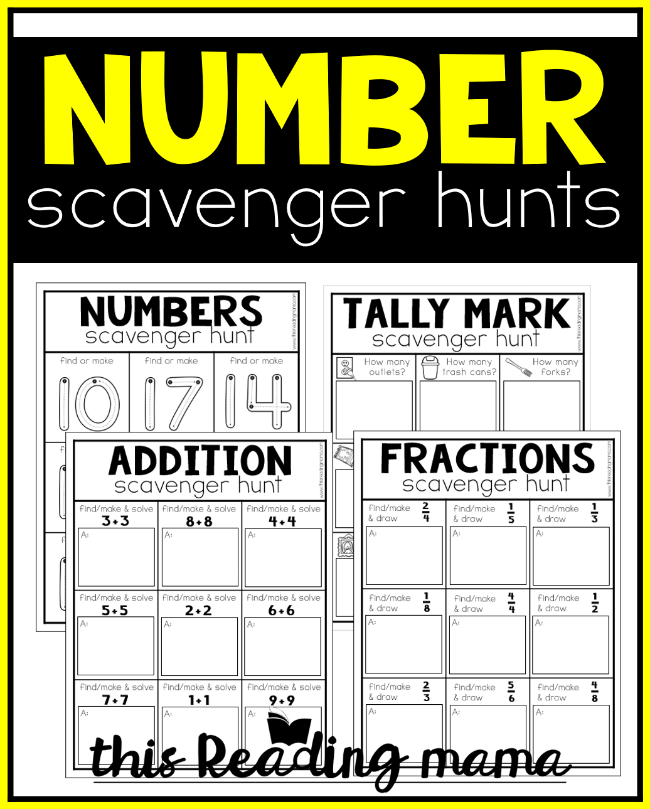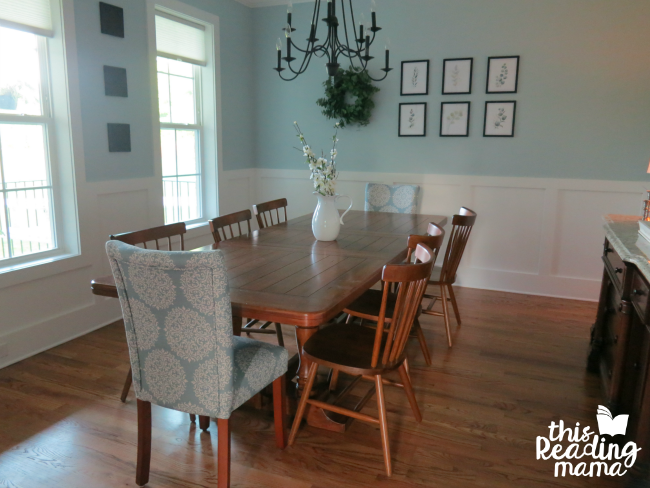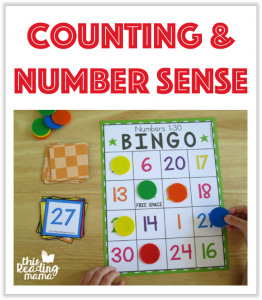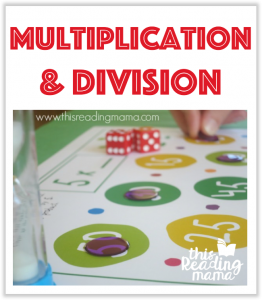Let’s have some fun with Printable Number Scavenger Hunts! You can use these to help your learners review TONS of number concepts.
Find all our Printable Scavenger Hunts.

This printable pack is a subscriber freebie!
If you are already a subscriber, you may go to my subscriber library and enter the NEW password, which can be found in your most current newsletter.
If you’re not a subscriber, subscribe HERE or use the subscriber box later in this post.
Printable Number Scavenger Hunts
You’ll LOVE all the number hunts included in this free pack!
1. Number 1-10 Hunts – Learners find things around the house {or outside} that equal the numbers on their boards. For example, if learners find and count 5 steps, then they trace the number 5 if they have it on their board.
2. Number 10-20 Hunts – Learners find things around the house {or outside} that equal the numbers on their boards. For example, if learners find and count 12 acorns, they trace the number 12 if they have it on their board.
3. Counting Hunts – Learners look for specific objects around the house {like number of chairs}, count how many they can find, then write the number in the blank box on their board.
4. Tally Mark Hunts – Learners look for specific objects around the house {like number of light switches}, count how many they can find, then write the amount using tally marks in the blank box on their board.
Note: The next 5 kinds of hunts might be a little on the abstract side, so I’m sharing some examples to help. Examples and directions are also include in the PDF for each activity.
5. Addition Hunts – Learners find or use objects around the house to create real life problems to solve the equations on their board. They can draw the objects they used to show how they solved the problem or just write the answer.
For example, learners can make or represent 2+3 by getting five pennies. Two could have the heads up and three could have the tails up. Learners can also find the equation around the house such as two windows in the living room plus three windows in the dining room equals five (2+3 equals 5).
6. Subtraction Hunts – Learners find or use objects around the house to create real life problems to solve the equations on their board. They can draw the objects they used to show how they solved the problem or just write the answer.
For example, learners will probably need to set up or stage subtraction problems. For example, seven forks take away two forks equals five forks. You could also help them set up the problems using objects inside or outside your house like pennies, dried beans, twigs, or rocks.
Math is everywhere. What number problems can you find in this picture? Some answers might include: 1+1 = 2 windows. 3 x 2 pictures on the wall. 4 x 8 legs on the chairs. 16 / 2 is 8 panes in every window.
7. Multiplication Hunts – Learners find or use objects around the house to create real life problems to solve the equations on their board. They can draw the objects they used to show how they solved the problem or just write the answer.
For example, learners can make or represent 2×6 by taking two pillows. Each pillow has 6 tassels, so 2×6 equals 12. They could also fill two cups with six beans/pennies each to show 2×6 equals 12.
8. Division Hunts – Learners find or use objects around the house to create real life problems to solve the equations on their board. They can draw the objects they used to show how they solved the problem or just write the answer. Like subtraction, learners will probably need to set up or stage division problems.
For example, if I have 9 pieces of candy and I need to give an equal amount to the 3 kids in this family, how many would each person need? (9 divided by3 equals 3.) You could also help them set up the problems using objects inside or outside your house like pennies, dried beans, twigs, or rocks.
9. Fraction Hunts – Learners look for or create things around their house that represent the fraction. They then draw the fraction they found or created with objects in the blank box on their board.
For example, if there are 5 bananas in the bunch and 3 of them have stickers on them, that could represent the fraction 3/5 (three-fifths). An outside example might be if 2 bikes are propped up and 2 bikes are laying down, this scenario could represent the fraction 2/4 (one-fourth). If your learners know how to reduce fractions, it could also represent 1/2 (one-half).
That’s a total of 28 FREE number scavenger hunts! WOW!
Find even more Number Fun!
{Click on the images below for more number freebies.}
Enter your email below to snag the FREE Printable Number Scavenger Hunts.
If you’re already a subscriber, you won’t be subscribed twice!
Enjoy hunting!
~Becky




This is great! Thank you for sharing this fun way to do math